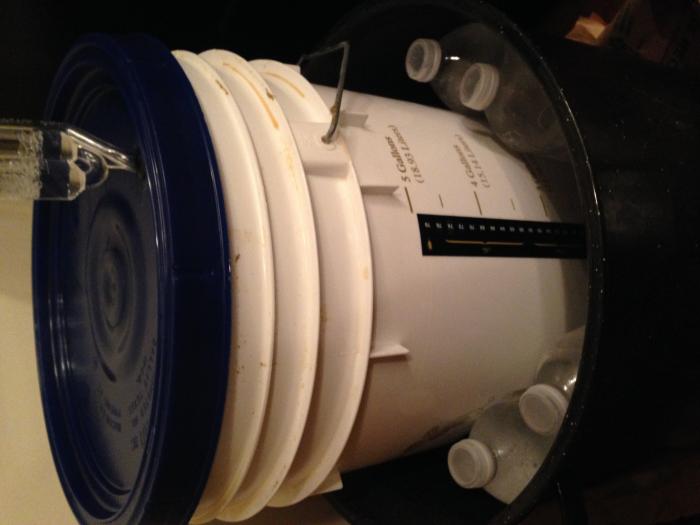Hi,
Yesterday I started brewing a Stone Brewing IPA after I got done I let the wort cool naturally and then I put it in the bucket and added 2 Gallons of cold spring water to make 5 Gallons. I tested the temp after it settled and I pitched the yeast at about 72º. I put my top on and tightened down (which may have been my first mistake) and let it be.
I didn't notice any fermentation activity before I went to bed and I didn't check it this morning before I went to work. So I got home at about 6:30 and I take a look at it. I first noticed that there was some activity in my airlock and then I look to the right and I see that I got foam and hop residue leaking out the side. Yikes. So I cleaned up re-sanitized my top and airlock and set it back on the bucket. I also placed the bucket in a ice bath to try to get the temp down because its was at about 75º according to the strip thermometer. But its still kind of foaming up around the top and I don't have a blow off tube.
I would like to save this batch if at all possible, what else can I do? Please help.
I've included a couple pics of what it's doing right now.
Thanks in advance.


Yesterday I started brewing a Stone Brewing IPA after I got done I let the wort cool naturally and then I put it in the bucket and added 2 Gallons of cold spring water to make 5 Gallons. I tested the temp after it settled and I pitched the yeast at about 72º. I put my top on and tightened down (which may have been my first mistake) and let it be.
I didn't notice any fermentation activity before I went to bed and I didn't check it this morning before I went to work. So I got home at about 6:30 and I take a look at it. I first noticed that there was some activity in my airlock and then I look to the right and I see that I got foam and hop residue leaking out the side. Yikes. So I cleaned up re-sanitized my top and airlock and set it back on the bucket. I also placed the bucket in a ice bath to try to get the temp down because its was at about 75º according to the strip thermometer. But its still kind of foaming up around the top and I don't have a blow off tube.
I would like to save this batch if at all possible, what else can I do? Please help.
I've included a couple pics of what it's doing right now.
Thanks in advance.














































![Craft A Brew - Safale S-04 Dry Yeast - Fermentis - English Ale Dry Yeast - For English and American Ales and Hard Apple Ciders - Ingredients for Home Brewing - Beer Making Supplies - [1 Pack]](https://m.media-amazon.com/images/I/41fVGNh6JfL._SL500_.jpg)












